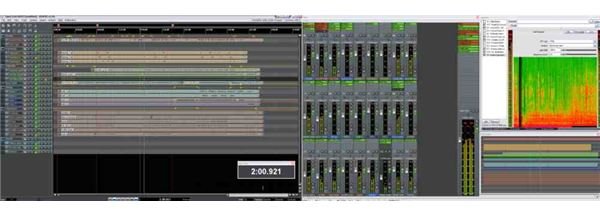Choosing Dual Monitors for your DAW
Why Use Dual Monitors?
No matter which DAW you are using, there will be times when you will need to work with a variety of windows, such as track view, main view, console or mixer view, explorer view and so on. On top of that there are the endless plug-ins, each needing its own window, and each talking up valuable screen real estate.
By using two monitors you can display so much more information and save yourself the frustration and wasted time of constantly having to open and close so many windows.
What Should You Look For?
Many people make the mistake of making their selection based solely on the hardware specifications of the monitors themselves. Sure, this matters, but what ultimately matters more is your choice of graphics card. Unfortunately most users don’t know what to look for.
You can visit countless web sites and read page after page of technical specifications, but to spend too much time on this would be a waste. Most of these specs are critical for meeting the demands of 3D shoot’em up type games, but the demands of your DAW on the graphics hardware are likely to be much more modest.
What you should also be looking at are the features of the control software that comes with your graphics card. This is what will enable you to really make your DAW fly. Here are some of the key features to look out for:
- Being able to assign hot keys, for example for zoom in and zoom out underneath the mouse cursor or to change your display settings on the fly.
- Being able to create and define mouse gestures for commonly used tasks, such as maximizing and restoring windows, or moving a window from one monitor to the other.
- Being able to create custom profiles for different applications, for example, to determine which screen different applications should open on, and within the application how you would like issues such as the placement of dialog boxes handled.
- Being able to define different screen resolutions for each monitor if you wish.
- Being able to create transparent windows if you wish.
- Especially if you intend to use two widescreen monitors with one in portrait mode, being able to rotate the screen display.
These are just some of the main benefits the use of dual monitors can bring - so be sure to research the software issues of the equipment you are considering, not just the hardware.
